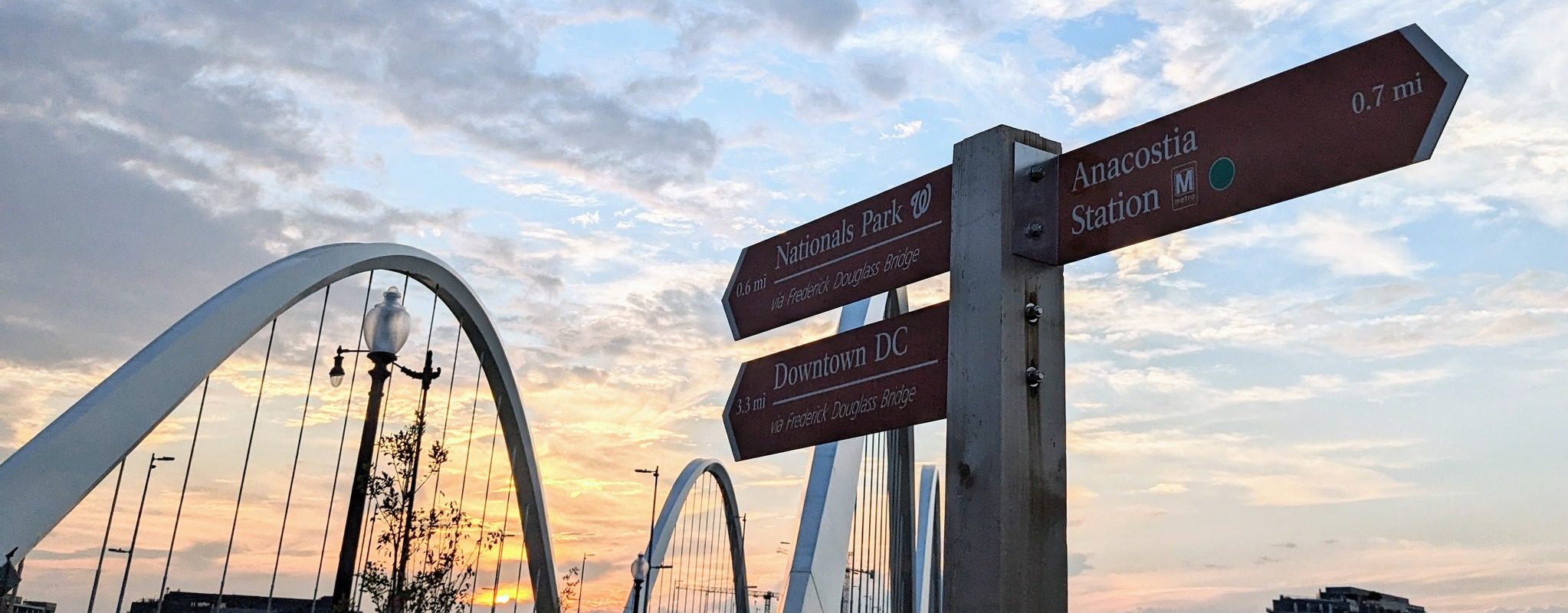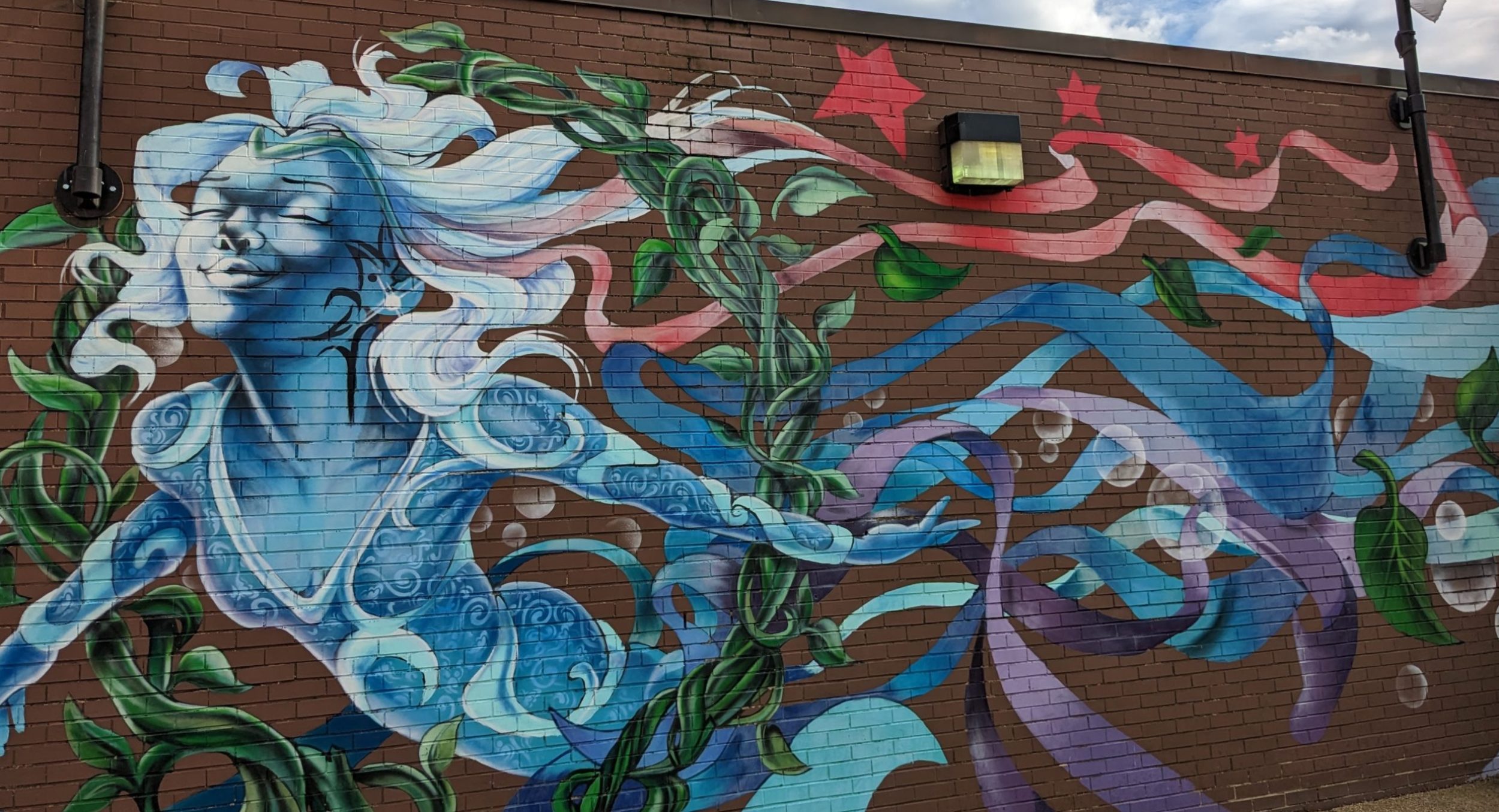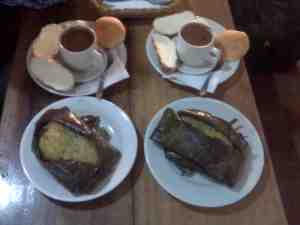 The waiter told us the trick for enjoying a traditional Bogotá breakfast of chocolate santafereno style. You rip the block of mild rich cheese served with your breakfast into little pieces and sink them into the cup of rich chocolate. Then, with the spoon, eat the curd that forms. It may sound weird, but it was a good combination of sweet and rich and chewy. We had this breakfast, shown to the right, at a little old cafe called la Puerta Falsa, near the city’s main square. We were able to see bogotanos like the man shown below in the hat eating the same breakfast we had.
The waiter told us the trick for enjoying a traditional Bogotá breakfast of chocolate santafereno style. You rip the block of mild rich cheese served with your breakfast into little pieces and sink them into the cup of rich chocolate. Then, with the spoon, eat the curd that forms. It may sound weird, but it was a good combination of sweet and rich and chewy. We had this breakfast, shown to the right, at a little old cafe called la Puerta Falsa, near the city’s main square. We were able to see bogotanos like the man shown below in the hat eating the same breakfast we had.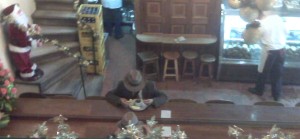
Blessed with diverse geography, Colombia can offer up some interesting foods. Our breakfast cheese in Bogotá likely came from the lovely green dairyland (lechera) in the nearby Ubate region. Colombia also produces an amazing variety of tropical fruits, such as the delicious small sourish orange called the lulo, my favorite. David enjoyed a guanabana drink one afternoon in Bogotá, as shown in this picture. That’s the bumpy green fruit. We also had many fruit shakes, with David favoring raspberry (mora). Maracuya (passionfruit) was another good one.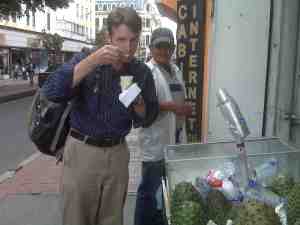

We had several fine dinners in Colombia, particularly fish dishes at La Vitrola in Cartagena and Antique in Villa de Leyva. Yet, the standout of the trip was the braised goat with ant sauce in Barichara. We tried to figure out what the regional specialty of fat-bottomed ants (hormiga culona) added to the dish. Maybe a little earthiness to the sauce. Anyway, the meat was tender and perfect and we loved the setting, the courtyard at Resaurant Las Cruces. Dessert was grilled pineapple, a dish we’ll try to replicate at home this summer.
To write about Colombian food without stressing the starch would be like writing about French food and omitting all references to butter. At a friendly colorful restaurant in Zipaquirá, shown here, I ordered a traditional soup called sancocho. Stewing in a very tasty broth were chunks of potatoes, and yucca, and plantains. And, the dish came with a side serving of rice.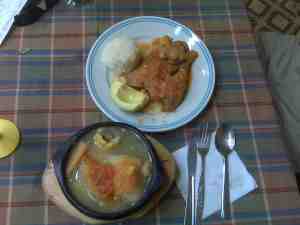
Another starchy staple of Colombian cooking is the side dish of smashed fried plantains, known as patacones. We had patacones with several meals during our time on the Caribbean coast, but the best ones were at a tiny place in the bus station in Santa Marta. We were grabbing what we hoped was a quick dinner there ahead of taking an overnight bus. Instead, it took much longer than we expected because the cook made fresh patacones to accompany our grilled chicken. They were worth the wait. The patacones had just the right mix of salt, grease and starch. It’s not something you’d have every day, but it was really a treat
